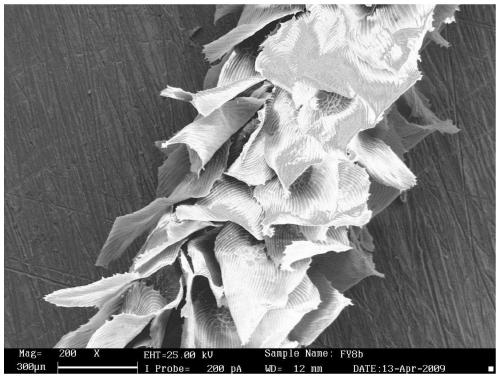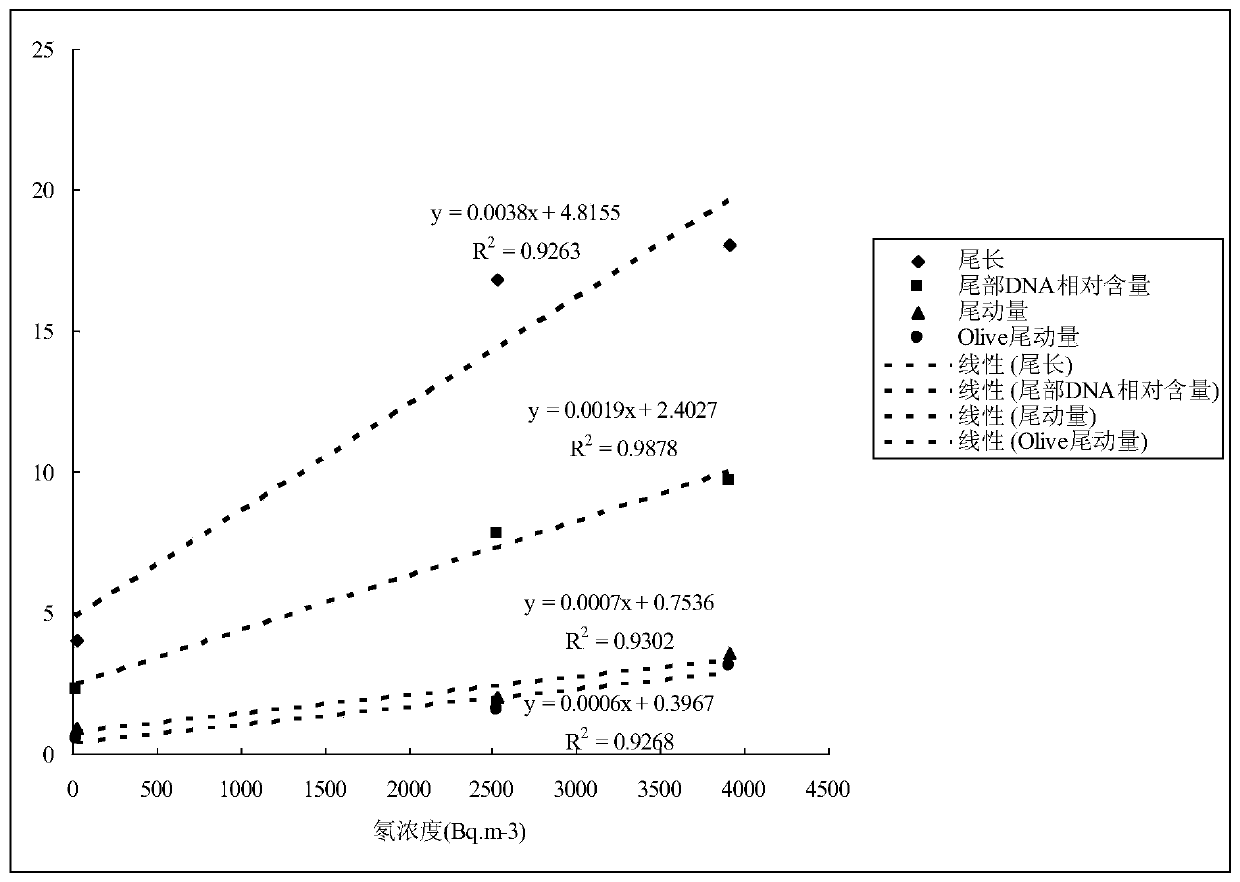A method for evaluating DNA damage of plants by detecting radioactive gas radon by using Usnea
A radioactive gas, DNA damage technology, applied in the preparation of test samples, measurement devices, sampling, etc., can solve problems such as difficulty in separating cell nuclei
- Summary
- Abstract
- Description
- Claims
- Application Information
AI Technical Summary
Problems solved by technology
Method used
Image
Examples
Embodiment
[0030] 1. Putting radon in plant samples
[0031] Choose Usnea as the experimental material. Because Usnea is an epiphyte, it does not need to grow in the soil and is in a clump shape. Therefore, weigh 3 clumps of healthy Usnea with a balance, each 200g, and divide them into a control group (the effect of the control group is shown in Table 1, and the degree of damage can be compared only if there is a control group) and two experimental groups. The control group was placed in a normal environment (the radon concentration was about 20Bq / m 3 ), the experimental group was placed at 1m 3 Treatment was carried out in the radon chamber, the initial exposure concentrations were 3910 and 2530Bq / m 3 . Evenly hang the usnea in a fixed position in the radon chamber with thin wires. Through the radon source ( 226 Ra) is charged with radon gas, the concentration of radon in the room is increased to the initial concentration, and the supply of radon is stopped, so that the plants are...
PUM
 Login to View More
Login to View More Abstract
Description
Claims
Application Information
 Login to View More
Login to View More - R&D
- Intellectual Property
- Life Sciences
- Materials
- Tech Scout
- Unparalleled Data Quality
- Higher Quality Content
- 60% Fewer Hallucinations
Browse by: Latest US Patents, China's latest patents, Technical Efficacy Thesaurus, Application Domain, Technology Topic, Popular Technical Reports.
© 2025 PatSnap. All rights reserved.Legal|Privacy policy|Modern Slavery Act Transparency Statement|Sitemap|About US| Contact US: help@patsnap.com



